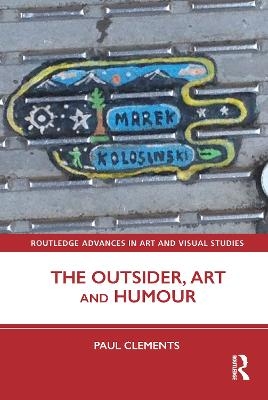
The Outsider, Art and Humour
Seiten
2020
Routledge (Verlag)
978-0-367-46822-4 (ISBN)
Routledge (Verlag)
978-0-367-46822-4 (ISBN)
This cross-disciplinary book situated on the periphery of culture employs humour to better comprehend the arts, the outsider and exclusion, illuminating the ever-changing social landscape, the vagaries of taste and limits of political correctness.
This cross-disciplinary book, situated on the periphery of culture, employs humour to better comprehend the arts, the outsider and exclusion, illuminating the ever-changing social landscape, the vagaries of taste and limits of political correctness.
Each chapter deals with specific themes and approaches – from the construct of outsider and complexity of humour, to Outsider Art and spaces – using various theoretical and analytical methods. Paul Clements draws on humour, especially from visual arts and culture (and to a lesser extent literature, film, music and performance), as a tool of ridicule, amongst other discourses, employed by the powerful but also as a weapon to satirize them. These ambiguous representations vary depending on context, often assimilated then reinterpreted in a game of authenticity that is poignant in a world of facsimile and 'fake news'. The humour styles of a range of artists are highlighted to reveal the fluidity and diversity of meaning which challenges expectations and at its best offers resistance and, crucially, a voice for the marginal.
This book will be of particular interest to scholars in art history, cultural studies, fine art, humour studies and visual culture.
This cross-disciplinary book, situated on the periphery of culture, employs humour to better comprehend the arts, the outsider and exclusion, illuminating the ever-changing social landscape, the vagaries of taste and limits of political correctness.
Each chapter deals with specific themes and approaches – from the construct of outsider and complexity of humour, to Outsider Art and spaces – using various theoretical and analytical methods. Paul Clements draws on humour, especially from visual arts and culture (and to a lesser extent literature, film, music and performance), as a tool of ridicule, amongst other discourses, employed by the powerful but also as a weapon to satirize them. These ambiguous representations vary depending on context, often assimilated then reinterpreted in a game of authenticity that is poignant in a world of facsimile and 'fake news'. The humour styles of a range of artists are highlighted to reveal the fluidity and diversity of meaning which challenges expectations and at its best offers resistance and, crucially, a voice for the marginal.
This book will be of particular interest to scholars in art history, cultural studies, fine art, humour studies and visual culture.
Paul Clements is Lecturer at Goldsmiths College, University of London. He is the author of The Creative Underground: Art, Politics and Everyday Life (Routledge, 2017) and Charles Bukowski, Outsider Literature, and the Beat Movement (Routledge, 2013).
Introduction
Approaches to humour and laughter
The construct of outsider: media labelling, 'othering' and excluded minds
The construct of outsider: identity, the body and representation
Humorous representations of the outsider: hybridity, utility and carnivalesque
Representations of humour by marginal artists
Creative outsider spaces and dark heterotopias
Transgression, spectacle and political correctness
Afterthoughts
| Erscheinungsdatum | 27.05.2020 |
|---|---|
| Reihe/Serie | Routledge Advances in Art and Visual Studies |
| Zusatzinfo | 25 Illustrations, black and white |
| Verlagsort | London |
| Sprache | englisch |
| Maße | 174 x 246 mm |
| Gewicht | 453 g |
| Themenwelt | Kunst / Musik / Theater ► Kunstgeschichte / Kunststile |
| Reisen ► Reiseführer | |
| Geisteswissenschaften ► Geschichte ► Hilfswissenschaften | |
| ISBN-10 | 0-367-46822-0 / 0367468220 |
| ISBN-13 | 978-0-367-46822-4 / 9780367468224 |
| Zustand | Neuware |
| Informationen gemäß Produktsicherheitsverordnung (GPSR) | |
| Haben Sie eine Frage zum Produkt? |
Mehr entdecken
aus dem Bereich
aus dem Bereich
kartografische Wissenskulturen um 1448
Buch | Hardcover (2024)
De Gruyter (Verlag)
99,95 €
die Geburt der Grafiksammlung des Kunstmuseums Stuttgart im …
Buch | Hardcover (2024)
VDG Weimar - Verlag und Datenbank für Geisteswissenschaften
24,00 €


